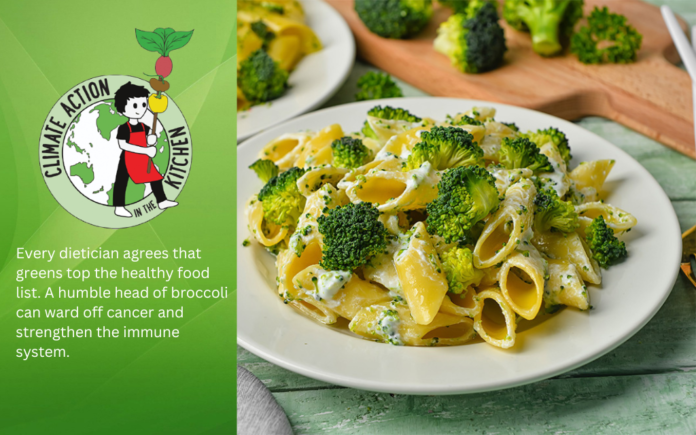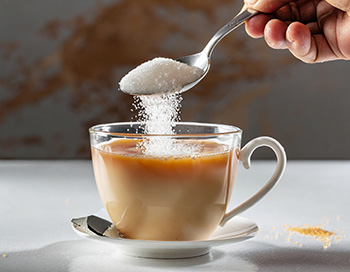Green equals life and growth: towering ancient forests, leafy forest margins and fertile plains lush with grasses and flowers, herbs, berries, fruits, and wild vegetables. Unaided, all these plants, and what we call weeds, create soil. They shade, house, and feed millions of creatures, including humans. This green mantle, nature’s korowai, wraps around the planet, gifting us clean air while maintaining the delicate balance of greenhouse gasses in the atmosphere.
Well, that’s how it used to be.
Over generations, people have been felling the world’s forests to farm animals and plant endless acres in monocrops and pastures to feed them. Now we’re destroying more great trees, not just in the Amazon but also right here in our own yards and subdivisions. As the climate gets hotter, we’ll wish they were still there. Can’t we keep large trees and build around them? Use the autumn leaves to mulch our gardens?
Even one tree per household helps green a neighbourhood. Plant a fruit tree and, literally, enjoy the fruits of your actions. Even one ‘vege-pod’ or square meter of leafy veges will help the green-up, and your food bill will go down. Growing a few simple staples like lettuce, silver beet, parsley, and spring onions is easy and rewarding, and the family will be healthier for it.
‘Rabbit food?’ You bet. Enjoying the plant-based life, we do eat a lot of greens.
But hang on a minute. Do we eat a lot of greens?
It’s easy to kid ourselves in token servings, a spoonful of cooked peas rolling around the plate. A couple of leaves of melted spinach. Maybe a decorative pea sprout, a sprig of parsley, or frill of lettuce on the side. The impression of health. A green ‘glow.’ Café and restaurant chefs have mastered the art. Is a token better than nothing? Maybe. But if we can have it all, the real health glow, why not go for it?
Every dietician agrees that greens top the healthy food list. When a humble head of broccoli can ward off cancer and strengthen the immune system, it is no wonder. And that’s just one green vege. Nutritionally, greens are loaded with myriad micronutrients and carotenoids. Chlorophyll alone is solar fuel, not only for pasture-munching animals, and plants themselves, but also for us. This green blood fuels our vitality, our inspirations, and our busy lives.
Yes, life can be stressful. Understandably we are tempted by refined, prep-free foods made tasty with ‘natural’ flavourings, and attractive with natural colourings. The high-oil mouth feel, similar to animal foods, is familiar to many of us, and filling. After a busy day, we give in sometimes.
But a healthy instant meal can be every bit as fast and far cheaper. For example, open a can of beans or chickpeas, spice them up and sneak in some greens. Serve with wholegrain pasta and some quick-pick fresh herbs and salad greens from the garden. It’s an empowering journey discovering how many healthy, quick eats we can come up with. And it’s fun sneaking in extra greens.
Enjoy the following delicious, green ways of boosting the family’s health and energy this spring. And please send us your ‘sneaky green’ ideas!
How to be sneaky
- Make ‘loaded’ salads by fine-chopping the greens (& other ingredients). Stir in a thick dressing to hold it all together. This way, we can double or triple the amount of salad greens we eat. Kids and folks who can’t chew well find finely chopped loaded salads easier to eat, too.
- Serve hot ‘loaded’ greens by fine-chopping a large pot of drained, cooked silver beet or kale, or a mix of both. A little soy sauce and some tahini will bind the greens, enhance the taste, and increase the level of absorbable calcium. (See loaded green recipes in the previous issue – Winter 2022).
- Add chopped greens when you’re cooking soup. Or blend a pot of cooked greens to make soup itself – instant, tasty, and with a gorgeous satin-sheen. Add some plant milk or blend in some tofu for a creamy soup.
- Think outside the square and experiment. The herb, rocket, for instance is also delicious cooked. Leftover salads can be cooked, mixed into stir-fries etc. Some weeds and herbs, either fresh or too tired for salads, are delicious cooked. If you’ve only a few, stir them into a soup or hotpot.
- Indulge your inner artist by using greens as a natural food colouring. For example, red and green make brown. So to create a rich brown soup stock or burger patty, blend greens with tomato puree or paste, (or a tiny amount of beetroot). Cavolo nero, the wonder-kale, is the greenest vege-pigment.
- Have a wholefood green ‘pesto’ in the fridge – instant greens to serve with, say, soup and toast, or on crackers. Make a large batch from basil, parsley or herbs blended with lemon juice and nuts or chia seeds, and freeze it in small containers (small amounts thaw quickly).
- Make green relishes and pickles when veges are in season. These can be enjoyed as is or stirred into a salad to dress or enrich it.
- If your home-preserved cucumber pickles have gone soggy, blend them to make a tangy, instant, zero-waste salad dressing.
- Add greens to smoothies, a hit with children.
- When prepping food for children, explore their preferences. Raw broccoli is popular with little people, and sliced cucumber. Involve them in creating shapes, or ‘people’ constructions out of raw veges.
- Greens enhance savoury muffins. Mild-flavoured greens can be hidden in sweet ones.
- Enjoy inventing ways to make a serving of greens more attractive.
- Make ‘pantry kale’ – (dried kale flakes) – by drying de-stemmed kale leaves in the oven on a low heat, then crumbling them by hand or in the food processor. Dried kale is a long-keeping ingredient you can add to any dish, any time of year. Nice in hummus, or as a ‘scatter’ across root veges for instance.
- Make green ‘sprinkles’ by mixing ground pumpkin seeds or hemp hearts with, say, a little spirulina, kelp, herbs, or pantry kale. Great on salads and veges!
- When dining out, ask if there is a nourishing, vegan ‘salad-as-a-meal’ option, e.g. ‘Buddha Bowl, or ‘Plant-based Bowl.’ In general, check out the salads and side salads to make sure they’re at least mesclun-based. If hot meals look low in veges, ask for an extra serving of greens or a side salad.
- Last but not least, plan ahead for something green in the menu – even with snack-food. Make greens a top-priority along with beans. ‘Greens ‘n Beans’ – we can’t do better than that. With spring bursting out in fresh, new season’s greens, it’s a great time to start!
- Make ‘loaded’ salads by fine-chopping the greens, (& other ingredients). Stir in a thick dressing to hold it all together. This way, we can double or triple the amount of salad greens we eat. Kids, and folks who can’t chew well, find finely chopped loaded salads easier to eat too.
- Serve hot ‘loaded,’ greens, by fine-chopping a large pot of drained, cooked silver beet or kale, or a mix of both. A little soy sauce and some tahini will bind the greens, enhance the taste, and increase the level of absorbable calcium. (See loaded green recipes in the previous issue – Winter 2022).
- Add chopped greens when you’re cooking soup. Or blend a pot of cooked greens to make soup itself – instant, tasty, and with a gorgeous satin-sheen. Add some plant milk or blend in some tofu for a creamy soup.
- Think outside the square and experiment. The herb, rocket, for instance is also delicious cooked. Leftover salads can be cooked, mixed into stir-fries etc. Some weeds and herbs, either fresh or too tired for salads, are delicious cooked. If you’ve only a few, stir them into a soup or hotpot.
- Indulge your inner artist by using greens as a natural food colouring. For example, red and green make brown. So to create a rich brown soup stock or burger patty, blend greens with tomato puree or paste, (or a tiny amount of beetroot). Cavolo nero, the wonder-kale, is the greenest vege-pigment.
- Have a wholefood green ‘pesto’ in the fridge – instant greens to serve with, say, soup and toast, or on crackers. Make a large batch from basil, parsley or herbs blended with lemon juice and nuts or chia seeds, and freeze it in small containers, (small amounts thaw quickly).
- Make green relishes and pickles when veges are in season. These can be enjoyed as is or stirred into a salad to dress or enrich it.
- If your home-preserved cucumber pickles have gone soggy, blend them to make a tangy, instant, zero-waste salad dressing.
- Add greens to smoothies, a hit with children.
- When prepping food for children, explore their preferences. Raw broccoli is popular with little people, and sliced cucumber. Involve them in creating shapes, or ‘people’ constructions out of raw veges.
- Greens enhance savoury muffins. Mild-flavoured greens can be hidden in sweet ones.
- Enjoy inventing ways to make a serving of greens more attractive.
- Make ‘pantry kale’ – (dried kale flakes) – by drying de-stemmed kale leaves in the oven on a low heat, then crumbling them by hand or in the food processor. Dried kale is a long-keeping ingredient you can add to any dish, any time of year. Nice in hummus, or as a ‘scatter’ across root veges for instance.
- Make green ‘sprinkles’ by mixing ground pumpkin seeds or hemp hearts with, say, a little spirulina, kelp, herbs, or pantry kale. Great on salads and veges!
- When dining out, ask if there is a nourishing, vegan ‘salad-as-a-meal’ option, e.g. ‘Buddha Bowl, or ‘Plant-based Bowl.’ In general, check out the salads and side salads to make sure they’re at least mesclun-based. If hot meals look low in veges, ask for an extra serving of greens or a side salad.
- Last but not least, plan ahead for something green in the menu – even with snack-food. Make greens a top-priority along with beans. ‘Greens ‘n Beans’ – we can’t do better than that. With spring bursting out in fresh, new season’s greens, it’s a great time to start!






